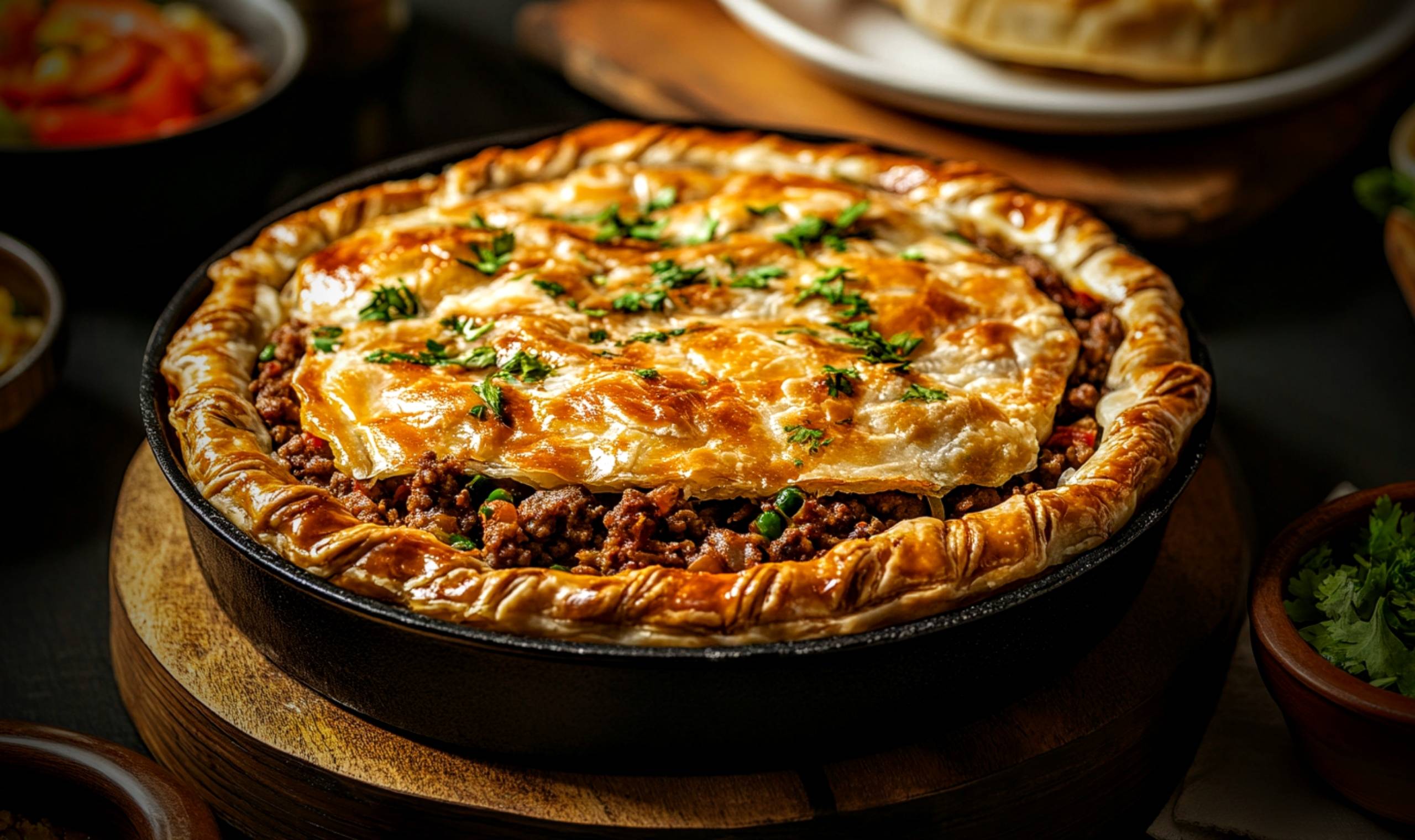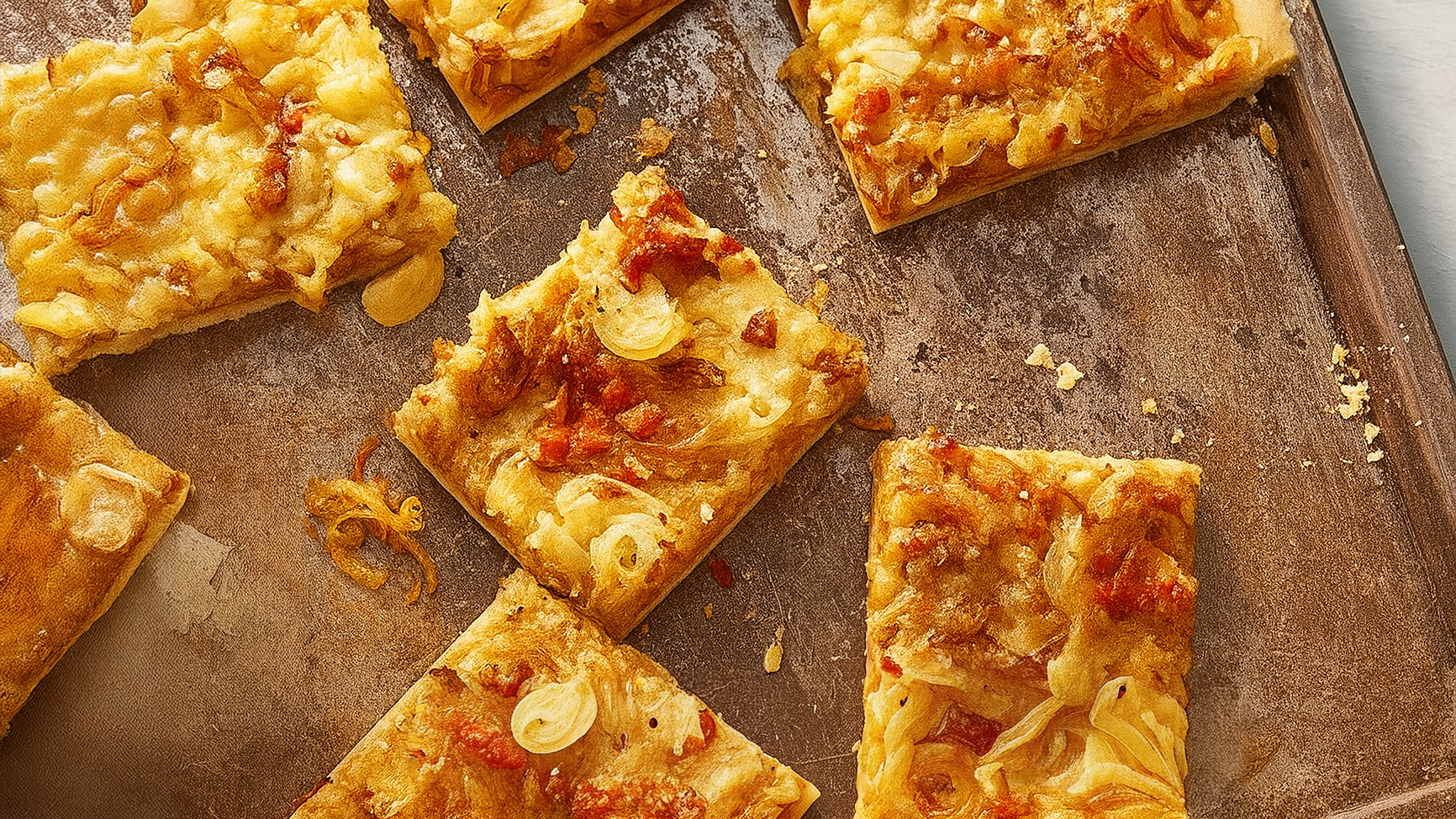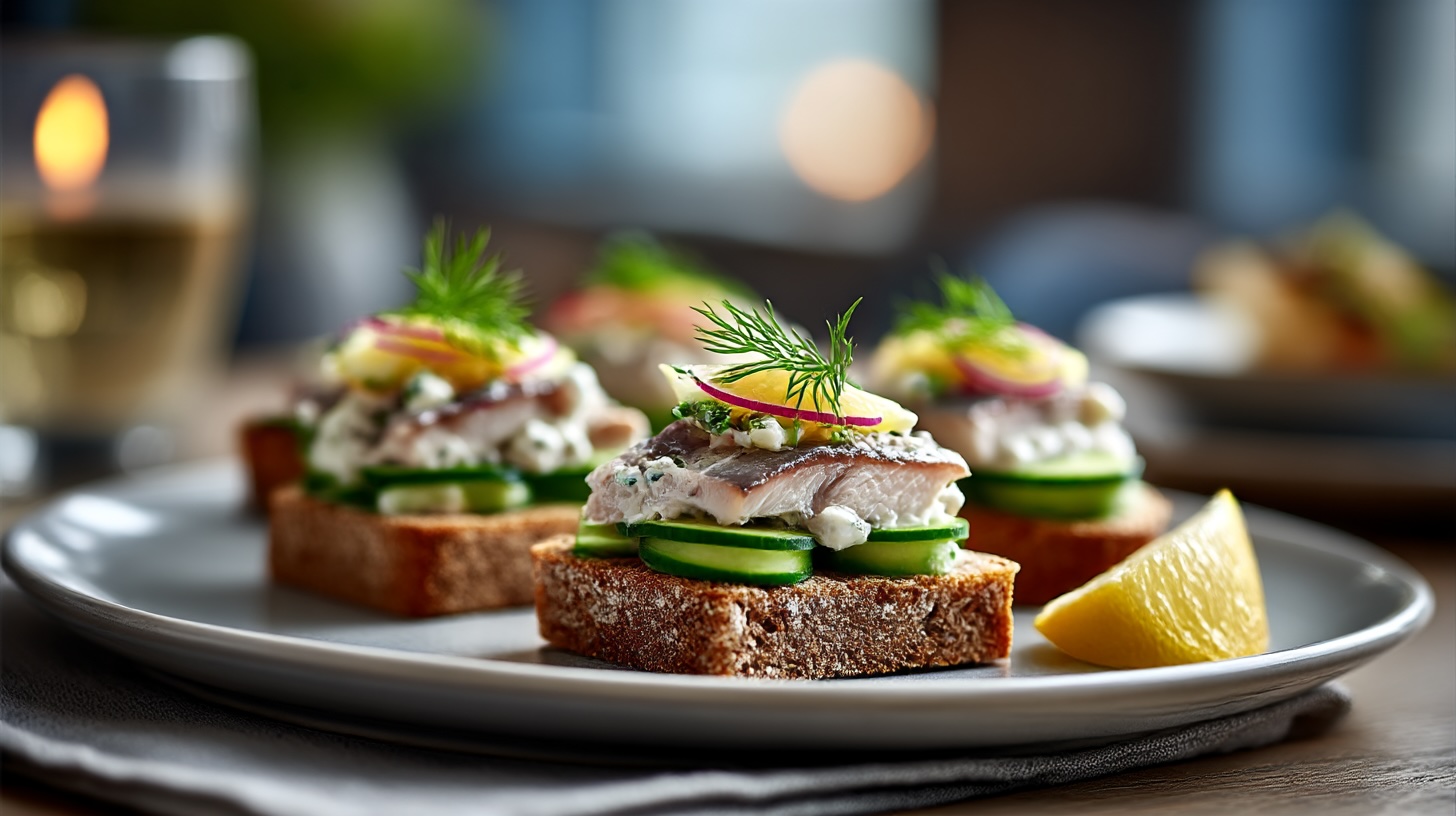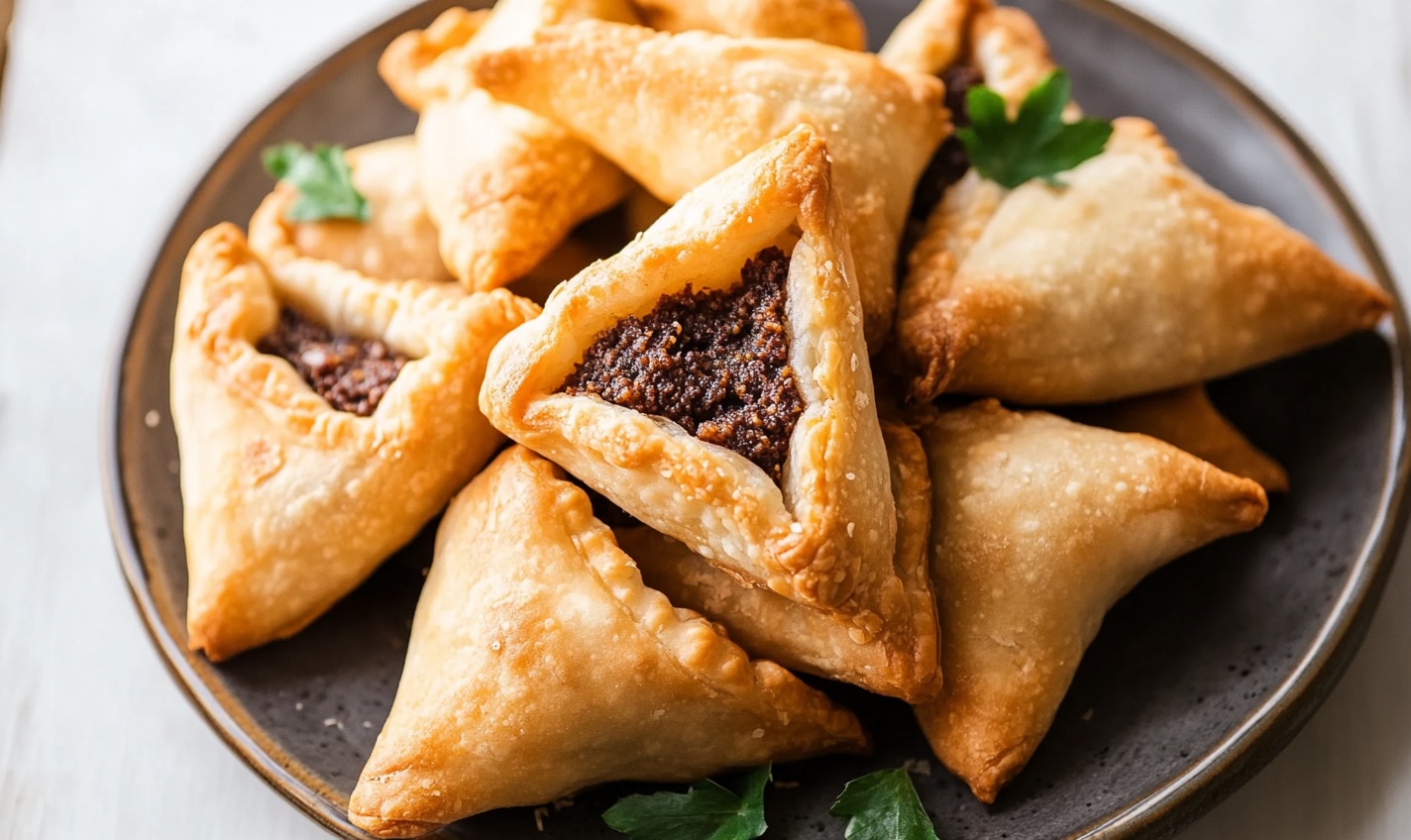Keema Pie: A Spicy Indian Delight
The Origin of Keema Pie
Keema pie, a savory dish that marries minced meat with pastry, has its roots in Indian cuisine, entwined with a rich tapestry of historical influences. Its origin can be traced back to the Mughal era, a period marked by extensive cultural and culinary exchange. The Mughals, who brought Persian culinary techniques to India in the 16th century, introduced new flavors and methods of cooking that significantly impacted local cuisines. This fusion laid the groundwork for what would eventually evolve into modern interpretations of keema.
The word “keema” itself refers to finely minced meat, which became a staple in many Indian households, particularly due to its versatility and robust flavors. In the Mughal courts, dishes featuring keema were often luxurious, adorned with spices and served in intricate styles that showcased the opulence of the era. As the Mughal influence spread throughout India, regions began to adapt this dish to suit their local tastes, leading to a variety of keema-based recipes.
Regional variations of keema laid the foundation for the development of keema pie. Each area incorporated indigenous spices and cooking methods, enhancing the dish’s appeal. For instance, in the north, richer spices combined with meats became prevalent, while southern regions introduced coconut and curry leaves into the mix. This divergence in ingredients and flavors ultimately shaped the contemporary keema pie, which features aromatic minced meat encased in a flaky pastry, often enjoyed as a comforting meal or snack.
Through centuries of adaptation and evolution, keema pie has endured as a beloved dish, reflecting the dynamic history of Indian cuisine. Its journey from royal kitchens to home-cooked nourishment showcases the blend of tradition and innovation that characterizes Indian culinary arts today.
The Rich History Behind Keema
The history of keema is deeply intertwined with the culinary traditions of India, where minced meats have been a vital part of various regional diets for centuries. The origins of keema can be traced back to the Mughal era, when the use of spices and meat dishes reached new heights in the Indian subcontinent. Mughals introduced not only robust flavors but also intricate cooking techniques that emphasized the rich marriage of spices with tender meat. Over time, keema evolved from its royal beginnings to become a beloved dish in Indian households across all social strata.
This dish, often made from lamb, chicken, or goat, became particularly popular due to its comfort and versatility. Traditionally, households prepared keema during festive occasions and family gatherings, creating a sense of warmth and togetherness around the dining table. The communal aspect of sharing a meal enriched its cultural significance, as generations of families would gather to savor this delight. Anecdotes abound of mothers passing down cherished recipes for keema from one generation to the next, with each family adding their unique twist to this savory dish.
The preparation of keema is not just about the meat; it also involves an array of aromatic spices such as cumin, coriander, and garam masala, which are key to its distinctive flavor. The skillful blend of these spices, often unique to each household, contributes to the personality of the dish across different regions. In some areas, keema may be served with warm, flaky parathas, while in others, it might accompany fragrant biryani. This adaptability underscores its renowned status as a staple in Indian cuisine. Thus, keema carries with it not only a complex flavor profile but also tales of history and heritage, enriching the cultural tapestry of Indian cooking.
Humorous Tidbits: Keema Pie Jokes
Food has always been a source of joy, and what better way to celebrate the delightful keema pie than with a few humorous anecdotes and puns? After all, when gathering with friends and family over a steaming hot dish of keema pie, laughter naturally complements the rich and spicy flavors that this Indian delicacy offers.
Consider this classic: Why did the keema pie get kicked out of the party? Because it was too filling! Whether you’re at a festive gathering or a cozy family dinner, a good pun can elevate the mood. It’s essential to remember that humor, much like a delicious pie, is best when shared.
Another joke to tickle your taste buds: What do you call a cow that plays the keema pie in an orchestra? A harmonizing beef! This kind of playful banter not only adds an element of joy but also sparks conversations about favorite recipes and variations of keema.
Imagine a gathering where someone brings a unique twist to the keema pie, like a vegetarian alternative. You might hear someone quip, “Is it still a keema pie if there’s no keema inside? Or should we call it a no-ma pie?” Such light-hearted jokes break the ice and create fond memories during meal times, making each encounter a celebration of flavors and laughter.
In many cultures, sharing food often brings the essence of togetherness, and humor enhances that experience. Making jokes about keema pie, with its aromatic spices and savory filling, fosters laughter and closeness among diners. As you explore the myriad ways this dish can inspire funny moments, remember that while the keema pie satisfies the palate, it is the joy and laughter shared that nourishes the spirit.
Classic Keema Pie Recipes
The cornerstone of a delicious keema pie lies in its flavorful filling and perfectly baked crust. This staple dish, derived from a rich tradition of Indian cuisine, can be adapted to suit varying tastes and dietary preferences. Below, we explore some classic recipes for making keema pie at home, emphasizing essential ingredients and techniques.
For a traditional minced meat keema pie, you will need boneless lamb or chicken, minced finely. Begin by sautéing chopped onions, garlic, and ginger in ghee, which adds depth to the flavor. Once the onions are translucent, stir in diced tomatoes, green chilies, and a blend of spices, such as garam masala, coriander, and cumin. Cook until the oil surfaces, then add the minced meat, allowing it to brown before seasoning with salt to taste. For a creamier texture, incorporating peas or diced potatoes provides a delightful twist. Once the mixture is cooked and aromatic, let it cool before encasing it in a flaky pastry crust.
For those seeking a vegetarian alternative, a spiced lentil-based filling offers a delicious option. Use a mixture of lentils like black gram and chickpeas, cooked and seasoned with similar spices as the traditional keema. Recipes can include finely chopped vegetables such as carrots, bell peppers, and spinach, contributing both nutrition and flavor. Baking this pie using a whole wheat or shortcrust pastry can enhance the dish’s nutritional value while still providing a satisfying texture.
Adjusting spice levels to cater to different palates is essential in any keema pie recipe. Offering a milder version with fewer green chilies or adding yogurt for creaminess can balance the heat. Whether you are indulging in a classic meat-based keema or a vegetarian rendition, these recipes allow for versatility while celebrating the rich flavors inherent in Indian cuisine.
Modern Twists on Traditional Keema Pie
The traditional keema pie, a beloved comfort food, has undergone significant evolution as contemporary chefs experiment with innovative flavors and ingredients. In the culinary landscape, where traditional recipes meet modern sensibilities, chefs are reimagining this classic dish, striking a balance between heritage and novelty. These inventive adaptations often incorporate global influences, resulting in unique fusion recipes that retain the essence of keema while appealing to contemporary palates.
One way chefs have modernized keema pie is by introducing unconventional ingredients. For instance, the use of chickpea flour or whole wheat in the crust can provide a healthier alternative to the classic pastry, catering to the rising demand for nutritious options. Additionally, some chefs have begun incorporating seasonal vegetables into the filling, adding texture and freshness that enhance the traditional spiced meat mixture. By integrating local and seasonal produce, they not only create a delightful taste experience but also support sustainable farming practices.
Culinary fusion has also inspired many modern interpretations of keema pie. Chefs have drawn inspiration from various international cuisines, creating dishes like Mexican keema pie, which features a cornbread crust and is topped with avocado and salsa, or Mediterranean versions that incorporate feta cheese, olives, and herbs. These adaptations broaden the appeal of keema pie, inviting new audiences to enjoy its rich flavors while celebrating multicultural culinary influences.
Moreover, renowned chefs are experimenting with plating and presentation, turning keema pie into an elegant dish suitable for fine dining. By elevating presentation and incorporating innovative flavors, they are encouraging diners to view this classic comfort food in a new light, making it relevant to contemporary dining experiences without losing connection to its flavorful roots.
Where to Find Authentic Keema Pie
For those eager to indulge in the rich and savory flavors of keema pie, a delightful Indian dish, there are numerous places where one can enjoy this culinary gem. From vibrant street vendors to renowned local restaurants, the variety of options contributes to the overall experience of tasting authentic keema pie.
In metropolitan areas like Mumbai and Delhi, several reputable Indian restaurants have made names for themselves through their unique takes on keema dishes. Establishments such as “Bukhara” in the ITC Maurya hotel in Delhi serve a mouthwatering rendition of keema, incorporating high-quality minced meat with a medley of spices that truly capture the essence of the dish. Similarly, “Cafe Madras” in Mumbai is celebrated for its traditional approach, offering a keema pie that combines rich flavors with perfectly cooked pastry, providing a delightful balance of texture and taste.
Moreover, street food lovers should not overlook the bustling markets of India, where one can discover incredible keema pie offerings from local vendors. In areas like the Colaba Causeway in Mumbai, small stalls serve freshly made keema pie, often accompanied by flavorful chutneys that enhance its taste. Vendors often pride themselves on their family recipes handed down through generations, bringing a genuine touch to the dish that is hard to replicate elsewhere.
Regions such as Hyderabad are also known for their unique variations of keema, often infused with regional spices and served in cozy eateries that offer a taste of local culture. Each locale provides its own twist on the classic dish, making the quest to find authentic keema pie a flavorful adventure for food enthusiasts. Whether dining in a first-class restaurant or sampling delicacies from a street vendor, the journey of savoring keema pie promises to be memorable and fulfilling.
Pairing Keema Pie with Beverages
When savoring the rich and spicy flavors of keema pie, the choice of beverage can significantly enhance the overall dining experience. Various drink options complement the distinctive seasonings of keema, bringing out its robust taste while balancing the spices involved.
For those inclined towards traditional beverages, chai is an excellent pairing. The robust, spiced tea sets a contrasting tone, creating a harmonious balance with the savory keema pie. The warmth of the chai adds comfort, making it an ideal companion for this hearty meal. Additionally, lassi, a yogurt-based drink, offers a refreshing counterpoint to the dish’s complexity. The cooling effect of sweet or salty lassi can mitigate the heat from the spices, ensuring that the keema flavors shine through without overwhelming the palate.
For a modern twist, craft cocktails have emerged as trendy accompaniments for Indian cuisine. A gin and tonic garnished with aromatic herbs provides a refreshing bite that complements the spices in keema. The botanicals in the gin can enhance the flavor profile of the pie, while the tonic’s effervescence cuts through the richness. Similarly, a fruity spritzer made with sparkling wine, fresh fruit, and a splash of soda can provide a delightful contrast, offering a light and bubbly refreshment alongside the savory pie.
If you prefer non-alcoholic options, consider pairing keema pie with iced masala tea or coconut water. The slight sweetness and unique flavor profiles of these drinks enhance the pie’s spices without overpowering them. Regardless of the beverage choice, the goal is to create a balancing act that elevates the keema pie experience, inviting diners to enjoy each savory bite while sipping thoughtfully crafted drinks.
The Nutritional Profile of Keema Pie
Keema pie is not only a flavorful dish but also offers a nutritional profile that can be both satisfying and beneficial. The primary ingredient in keema pie is minced meat, often lamb or chicken, which serves as a great source of protein. An average serving of keema provides a substantial amount of protein that promotes muscle growth and repair. Additionally, minced meat is rich in essential vitamins and minerals, including B vitamins, iron, and zinc, necessary for various bodily functions.
Beyond the meat, keema pie typically incorporates a variety of vegetables such as peas, carrots, and onions. These vegetables contribute dietary fiber, which aids in digestion and helps maintain a healthy weight. Eating a balanced diet that includes fiber-rich foods can reduce the risk of various chronic diseases. Moreover, the spices used in keema, such as cumin, coriander, and turmeric, offer anti-inflammatory and antioxidant properties, promoting overall health and well-being.
However, keema pie can sometimes be high in calories and saturated fats, especially when prepared with rich pastry crusts or excessive oil. To enhance the dish’s nutritional value, consider using leaner cuts of meat and incorporating more vegetables into the filling. Whole grain pastry can also be an excellent substitution for traditional white flour crusts, adding fiber and nutrients. Furthermore, preparing keema pie with less oil or opting for healthier cooking methods like baking instead of frying can greatly reduce its calorie content without compromising flavor.
Ultimately, by being mindful of the ingredients and their preparation, keema pie can remain a delightful and nutritious choice. This beloved dish not only satisfies the palate but can also be tailored to fit a healthier lifestyle, making it a versatile staple in many households.
Cultural Significance of Sharing Keema Pie
In many cultures, sharing meals is a fundamental part of social bonding, and the keema pie stands out as a particularly cherished dish in Indian communities. This delightful combination of spiced ground meat encased in flaky pastry serves as more than just nourishment; it symbolizes togetherness, celebration, and love. Families often gather around the table to enjoy keema pie during significant life events such as weddings, festivals, and anniversaries, highlighting its role as a centerpiece that brings people closer.
The preparation of keema pie often involves multiple family members, with each contributing unique touches to the recipe that reflect their cultural heritage. For instance, grandparents might impart time-honored techniques, while younger generations put a modern twist on traditional ingredients. This collaborative cooking process not only fosters a sense of belonging but also preserves recipes that have been handed down through generations, ensuring that the essence of family life remains intact.
In personal celebrations, a home-cooked keema pie may be presented as an expression of gratitude and hospitality. It is common for hosts to prepare this dish for friends and relatives, embodying the Indian saying “Atithi Devo Bhava,” which translates to “The guest is God.” The act of sharing a slice of this savory treat reinforces relationships and creates lasting memories among family and friends, deepening the emotional ties that bind them together.
Moreover, keema pie is often part of comforting family dinners, especially during times of stress or hardship. The warmth and flavors of this dish evoke feelings of safety and familiarity, allowing families to connect over shared experiences and challenges. In essence, the significance of keema pie extends beyond just taste; it is a celebration of community, family heritage, and the nurturing spirit inherent in sharing meals together.



